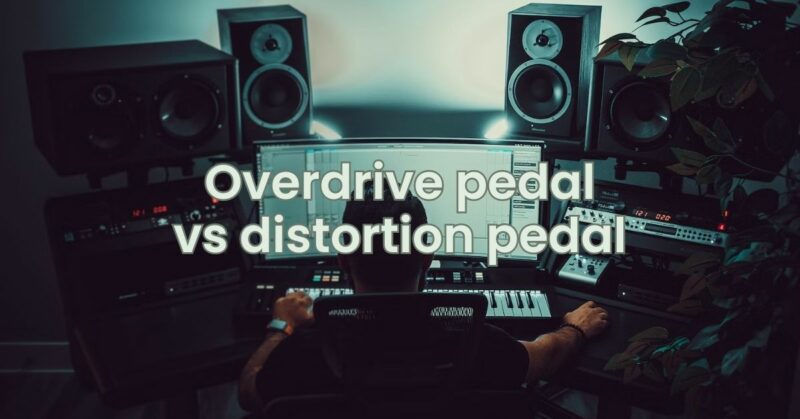Overdrive and distortion pedals are two of the most popular guitar effects pedals, and for good reason. They can both be used to add a wide range of tones to your guitar, from subtle to extreme. But what’s the difference between the two?
Overdrive
An overdrive pedal is a type of effect pedal that is used to add a warm, saturated tone to your guitar. It does this by pushing the signal from your guitar’s pickup into the amp’s preamp, causing the signal to clip. This clipping creates a distortion effect, but it’s a softer, more natural-sounding distortion than what you would get from a distortion pedal.
Overdrive pedals are often used to emulate the sound of a tube amp that is being pushed to its limits. They can also be used to add a bit of grit and sustain to your guitar’s sound. Some popular overdrive pedals include the Ibanez TS808, the Klon Centaur, and the Fulltone OCD.
Distortion
A distortion pedal is a type of effect pedal that is used to add a more aggressive, distorted tone to your guitar. It does this by clipping the signal from your guitar’s pickup more heavily than an overdrive pedal. This creates a harsher, more overdriven sound that is often used in rock, metal, and other heavy genres.
Distortion pedals can be used to create a wide range of tones, from mild overdrive to heavy metal crunch. Some popular distortion pedals include the Boss DS-1, the MXR Distortion +, and the Electro-Harmonix Big Muff Pi.
Which Pedal Should You Choose?
So, which pedal should you choose? It really depends on the sound you’re going for. If you want a warm, natural-sounding distortion, then an overdrive pedal is a good option. If you want a more aggressive, overdriven sound, then a distortion pedal is a better choice.
Of course, you can also use both overdrive and distortion pedals together. This can give you a wider range of tones to work with. For example, you could use an overdrive pedal to add a bit of grit to your guitar’s sound, and then use a distortion pedal to add more gain and saturation.
Experimentation is Key
The best way to decide which pedal is right for you is to experiment with different pedals and see what sounds you like best. There are a lot of great overdrive and distortion pedals on the market, so you’re sure to find one that fits your needs.
Here are some additional tips for choosing an overdrive or distortion pedal:
- Consider the type of music you play. If you play rock or metal, then you’ll probably want a distortion pedal with a lot of gain. If you play blues or country, then you might want an overdrive pedal with a more subtle tone.
- Think about your budget. Overdrive and distortion pedals can range in price from a few dollars to hundreds of dollars. It’s important to set a budget before you start shopping so that you don’t overspend.
- Read reviews. There are a lot of great resources online where you can read reviews of overdrive and distortion pedals. This can help you narrow down your choices and find the pedal that’s right for you.
With a little experimentation, you’ll be able to find the perfect overdrive or distortion pedal to add some extra grit and sustain to your guitar’s sound.


